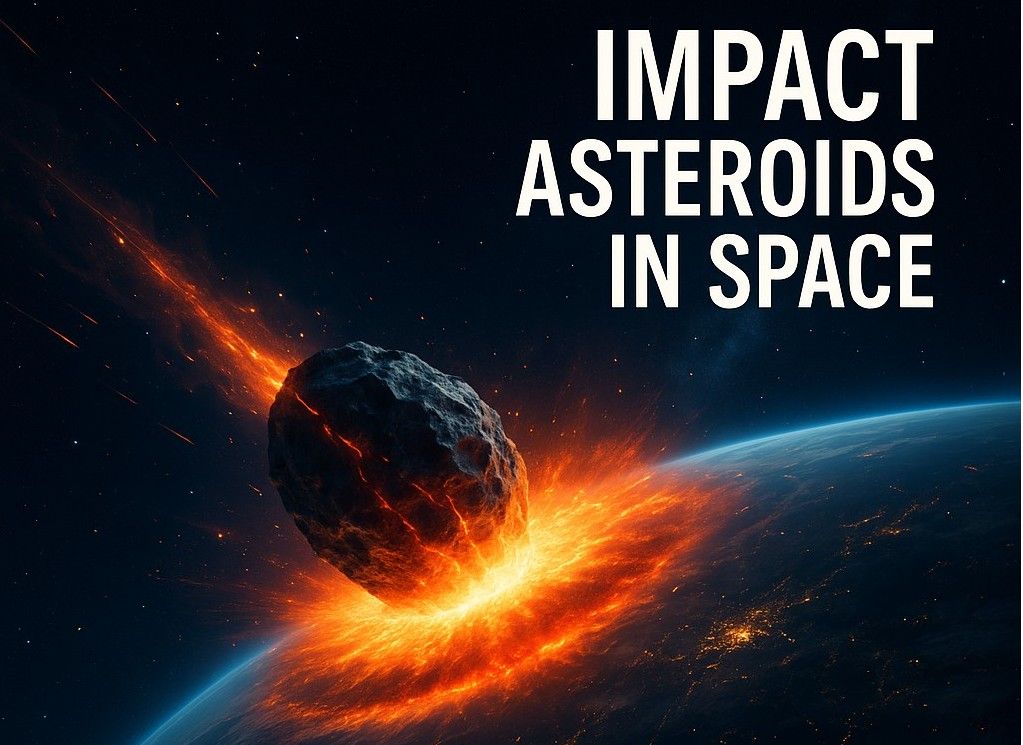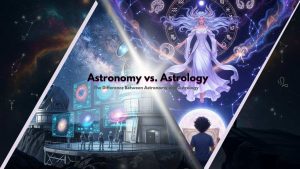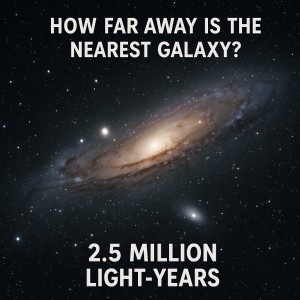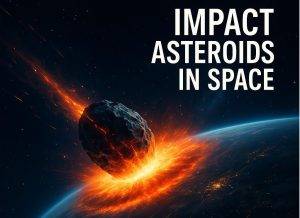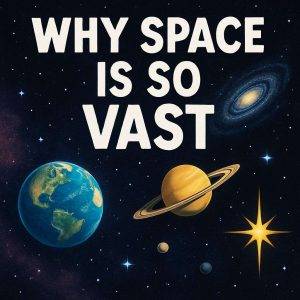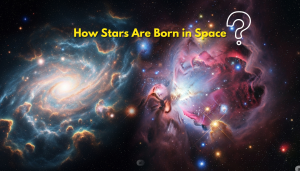Impact Asteroids in Space
The Cosmic Collisions That Shaped the Universe
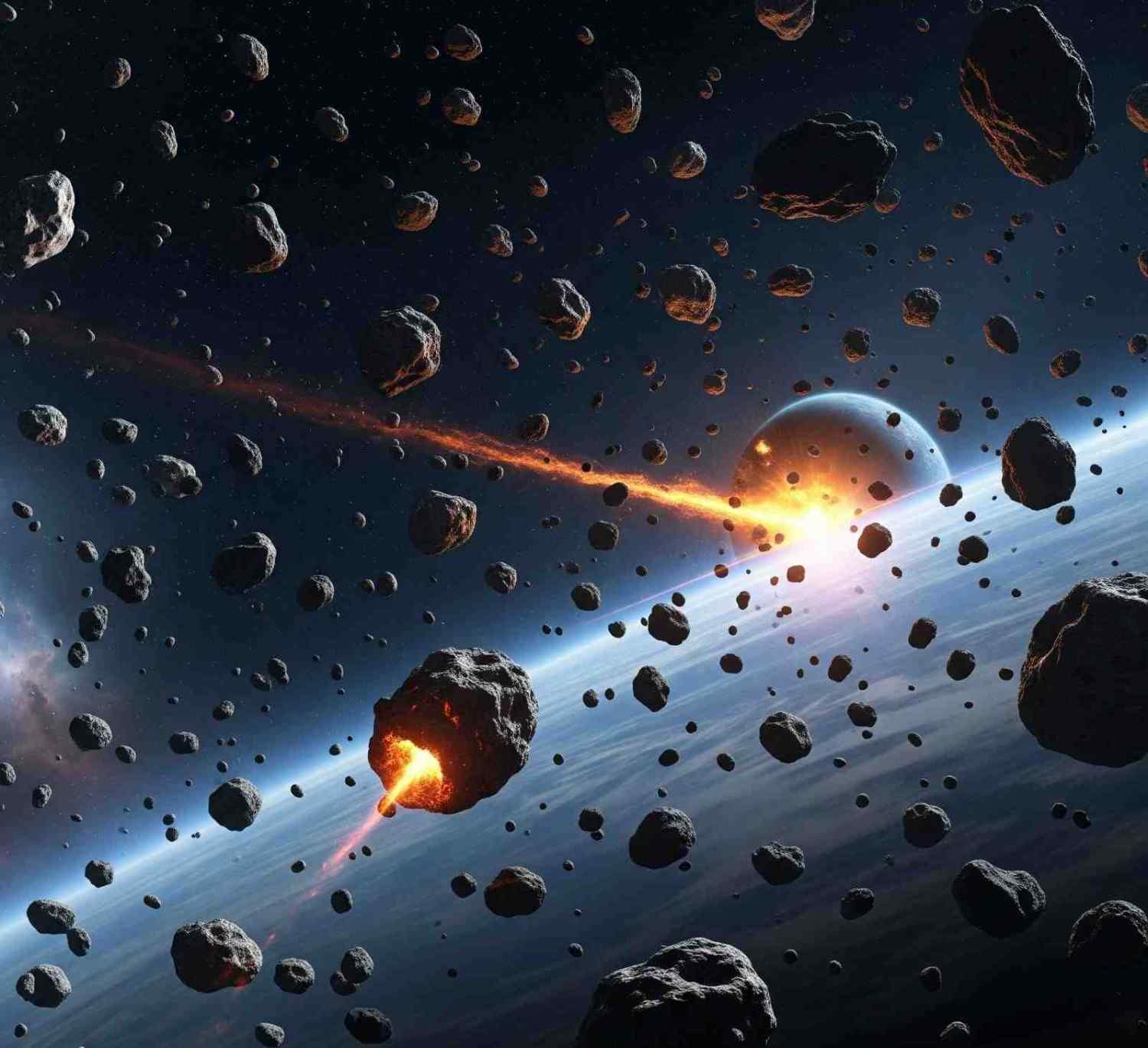
From ancient craters on Earth to mysterious scars on distant moons and planets, impact asteroids in space have left their mark across the cosmos. These cosmic collisions are not only fascinating remnants of violent events but also critical forces that have shaped the history and future of planetary systems. Understanding impact asteroids offers insight into the birth of planets, the evolution of life, and even the threats humanity might face in the future. impact asteroids in space
What Are Impact Asteroids?
Impact asteroids are space rocks—ranging from a few meters to hundreds of kilometers wide—that collide with celestial bodies such as planets, moons, or other asteroids. These collisions occur at high velocities, often between 20 to 70 kilometers per second, releasing energy equivalent to millions of nuclear bombs. The result is a powerful explosion that forms impact craters, reshapes planetary surfaces, and sometimes alters atmospheres. impact asteroids in space
Asteroids are remnants from the early solar system—chunks of rock, metal, and ice that never formed into planets. Most reside in the Asteroid Belt between Mars and Jupiter, but some follow orbits that cross paths with Earth and other planets. When these bodies collide with a surface, they are called impact events.
The Science Behind the Collision
When an asteroid strikes a celestial body:
- The immense kinetic energy is instantly converted into heat, shockwaves, and momentum.
- A crater is excavated, often many times larger than the impactor itself. impact asteroids in space
- If the impact is large enough, it can trigger earthquakes, tsunamis, or atmospheric changes.
For example, the asteroid that struck Earth around 66 million years ago, known as the Chicxulub impactor, is believed to have caused the mass extinction of the dinosaurs. That single event released energy estimated at 100 million megatons of TNT—over a billion times more powerful than the Hiroshima bomb. impact asteroids in space
Famous Asteroid Impact Sites
- Chicxulub Crater (Mexico)
- Diameter: ~180 km
- Significance: Caused the Cretaceous-Paleogene extinction event.
- Vredefort Crater (South Africa) ]impact asteroids in space
- Diameter: ~300 km
- Age: Over 2 billion years old
- Barringer Crater (Arizona, USA)
- Diameter: ~1.2 km
- One of the best-preserved impact craters.
- Tycho Crater (Moon) ]impact asteroids in space
- Diameter: ~85 km
- Visible from Earth with a telescope; created by an asteroid impact.
- Valhalla Crater (Callisto, Jupiter’s Moon)
- Diameter: ~3,800 km
- A stunning multi-ringed impact basin.
Asteroids and the Origins of Life
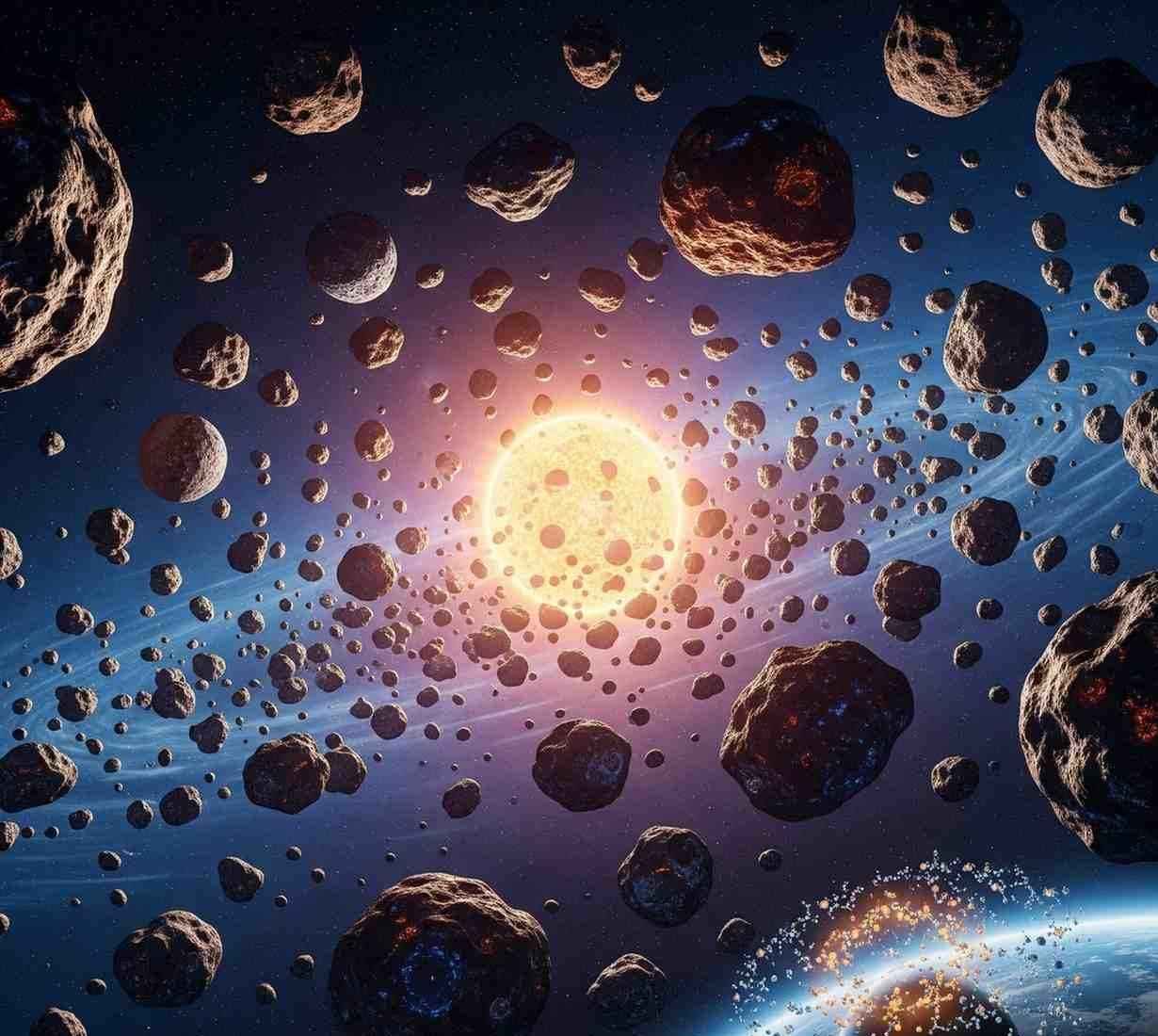
Surprisingly, asteroid impacts may not only cause destruction but also play a role in creating life. Scientists suggest that during Earth’s early formation, asteroids delivered water, organic molecules, and amino acids—the building blocks of life.
Additionally, the energy from impacts may have created environments conducive to chemical reactions essential for life. In a twist of cosmic irony, the same forces that can annihilate entire ecosystems might have helped spark the very beginnings of biology on Earth.
Ongoing Threats: Near-Earth Objects (NEOs)
Not all impact asteroids are ancient history. Thousands of Near-Earth Objects (NEOs)—asteroids and comets that come close to Earth’s orbit—are monitored by space agencies today.
NASA, ESA, and other organizations are actively tracking these bodies to predict potential future impacts. The Planetary Defense Coordination Office (PDCO) and missions like NEOWISE, DART (Double Asteroid Redirection Test), and Hera are part of a global effort to detect, monitor, and eventually deflect hazardous objects.
The DART mission in 2022 successfully altered the orbit of the asteroid moonlet Dimorphos, proving we can potentially defend Earth from future threats.
Impact Craters Across the Solar System ]impact asteroids in space
Other planets and moons show dramatic evidence of impact asteroids:
Because most planets don’t have weather or plate tectonics like Earth, their impact craters remain preserved for billions of years, giving scientists valuable clues about the history of our solar system.
The Future: Monitoring and Prevention
With advanced telescopes, AI-powered tracking systems, and space missions, humanity is now more prepared than ever to monitor and potentially prevent asteroid impacts. Proposed methods for future asteroid defense include: impact asteroids in space
- Kinetic impactors (like DART)
- Gravity tractors (using spacecraft to subtly alter an asteroid’s orbit)
- Laser ablation or solar sails
- Nuclear deflection, as a last resort
Continued investment in space observation, public awareness, and international cooperation is key to preventing a catastrophic event.Why Are Asteroids Important to Space?
In the vast and mysterious expanse of the cosmos, asteroids are often seen as mere cosmic debris — leftovers from the early formation of the solar system. These rocky remnants, ranging in size from small pebbles to objects hundreds of kilometers wide, drift silently through the vacuum of space. To the casual observer, they may seem insignificant compared to the grandeur of stars, planets, and galaxies. However, upon closer examination, asteroids are far more important to space science and exploration than we often realize. They are time capsules, potential threats, sources of untapped wealth, and keys to understanding the origin of life itself. impact asteroids in space
1. Windows into the Early Solar System
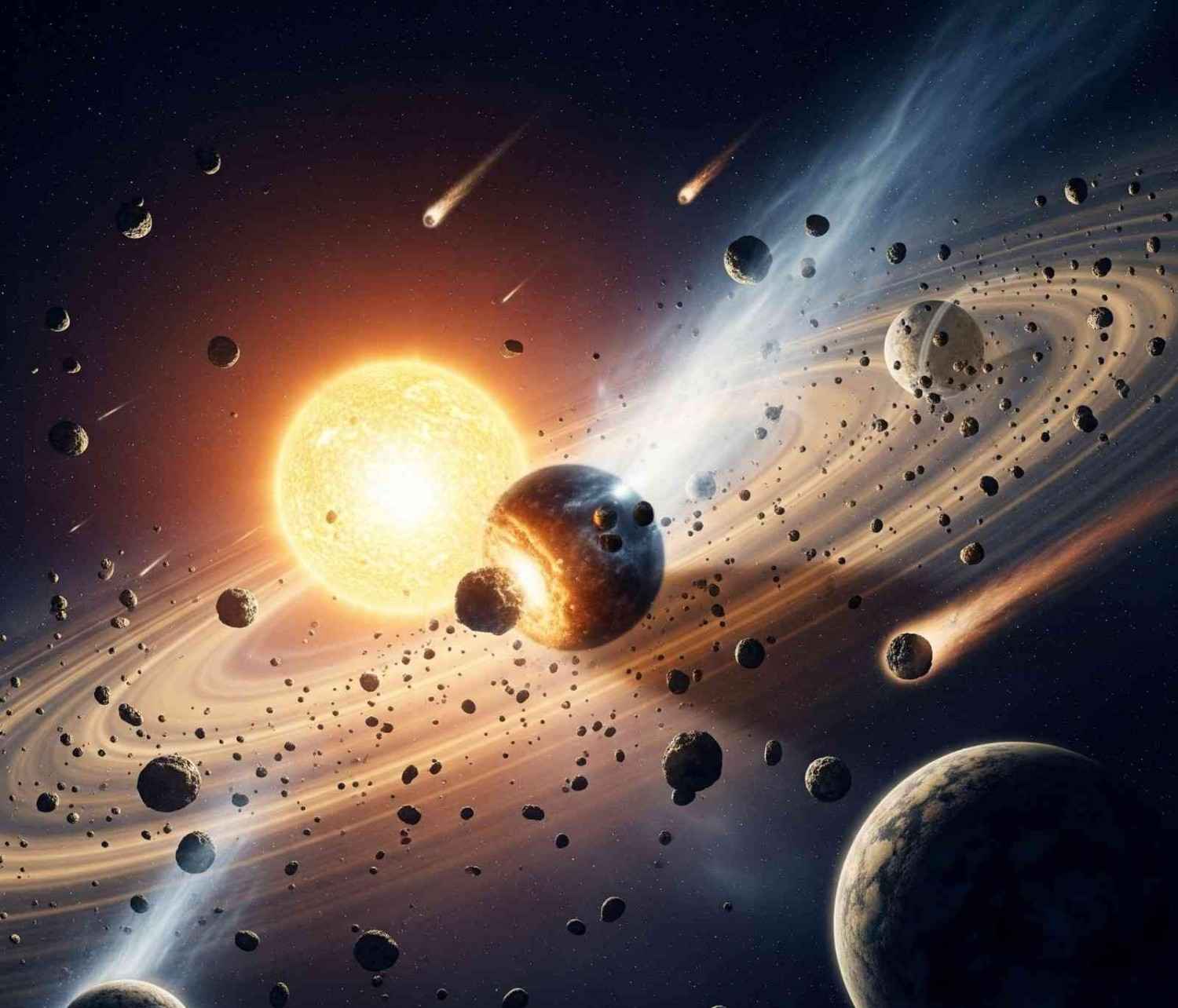
Asteroids are primordial relics. Unlike planets, which have undergone significant changes due to geological activity and atmospheric influences, many asteroids have remained relatively unchanged over billions of years. This makes them pristine records of the early solar system. impact asteroids in space
Studying the composition of asteroids allows scientists to peer back in time and uncover clues about how the solar system evolved. By analyzing their minerals, isotopes, and chemical structures, researchers gain critical insights into planetary formation processes and the conditions that existed before Earth even came into being. impact asteroids in space
Notable Missions
Several space missions have focused on asteroid exploration. NASA’s OSIRIS-REx mission collected samples from asteroid Bennu, while Japan’s Hayabusa and Hayabusa2 missions returned samples from Itokawa and Ryugu. These missions have provided unprecedented data, revealing complex organic compounds and water-bearing minerals that may hint at the building blocks of life.
2. Asteroids and the Origins of Life]impact asteroids in space
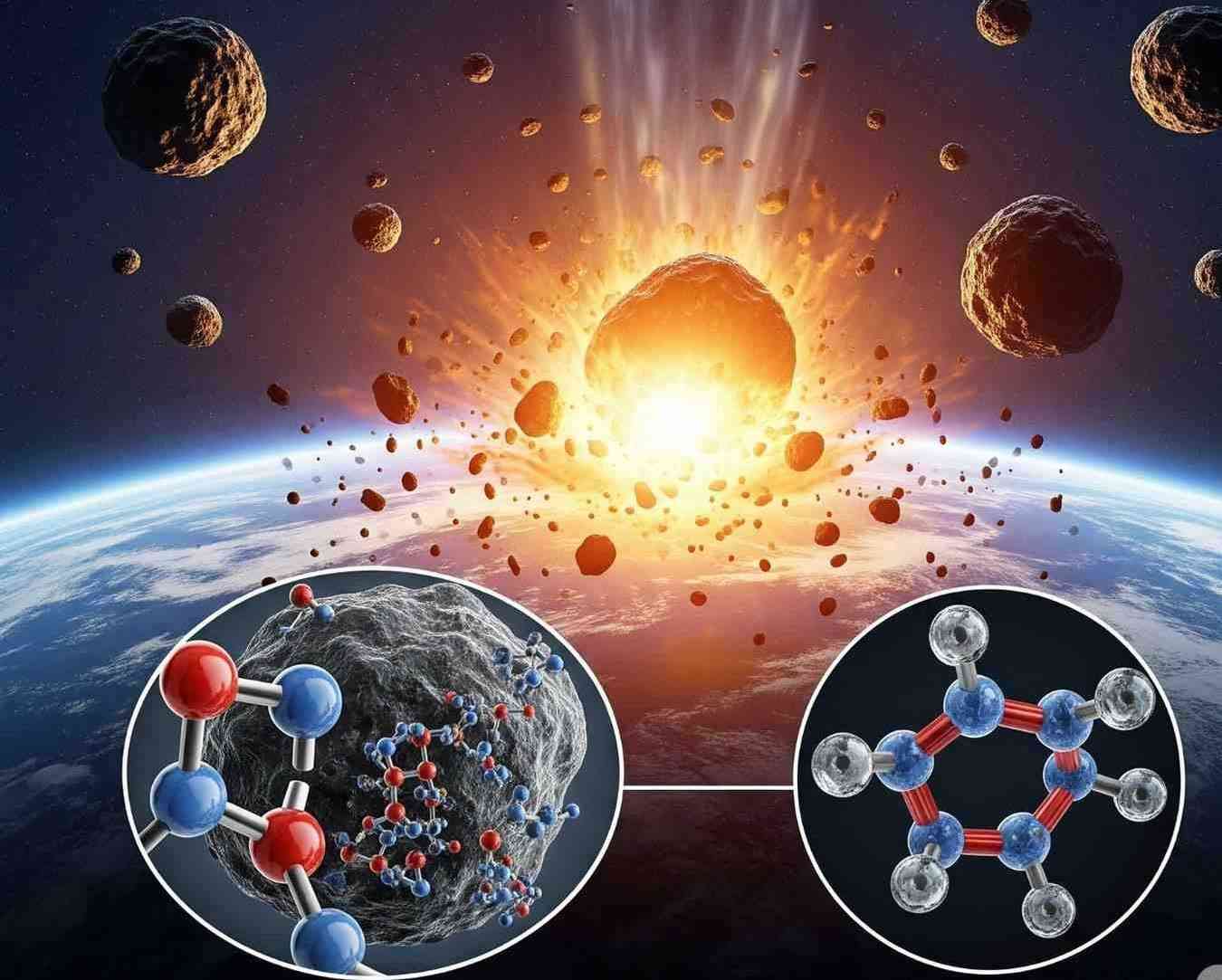
One of the most compelling reasons asteroids are important to space is their potential role in the origin of life on Earth. Some scientists theorize that the essential ingredients for life — such as water, amino acids, and other organic molecules — may have been delivered to Earth via asteroid impacts.
In fact, several carbon-rich asteroids, known as C-type (carbonaceous) asteroids, have been found to contain complex organic molecules. If these materials were delivered to Earth through asteroid bombardments during the planet’s early history, it’s possible that asteroids played a critical role in kick-starting the biochemical processes that eventually led to life.
3. Natural Resources and Space Mining
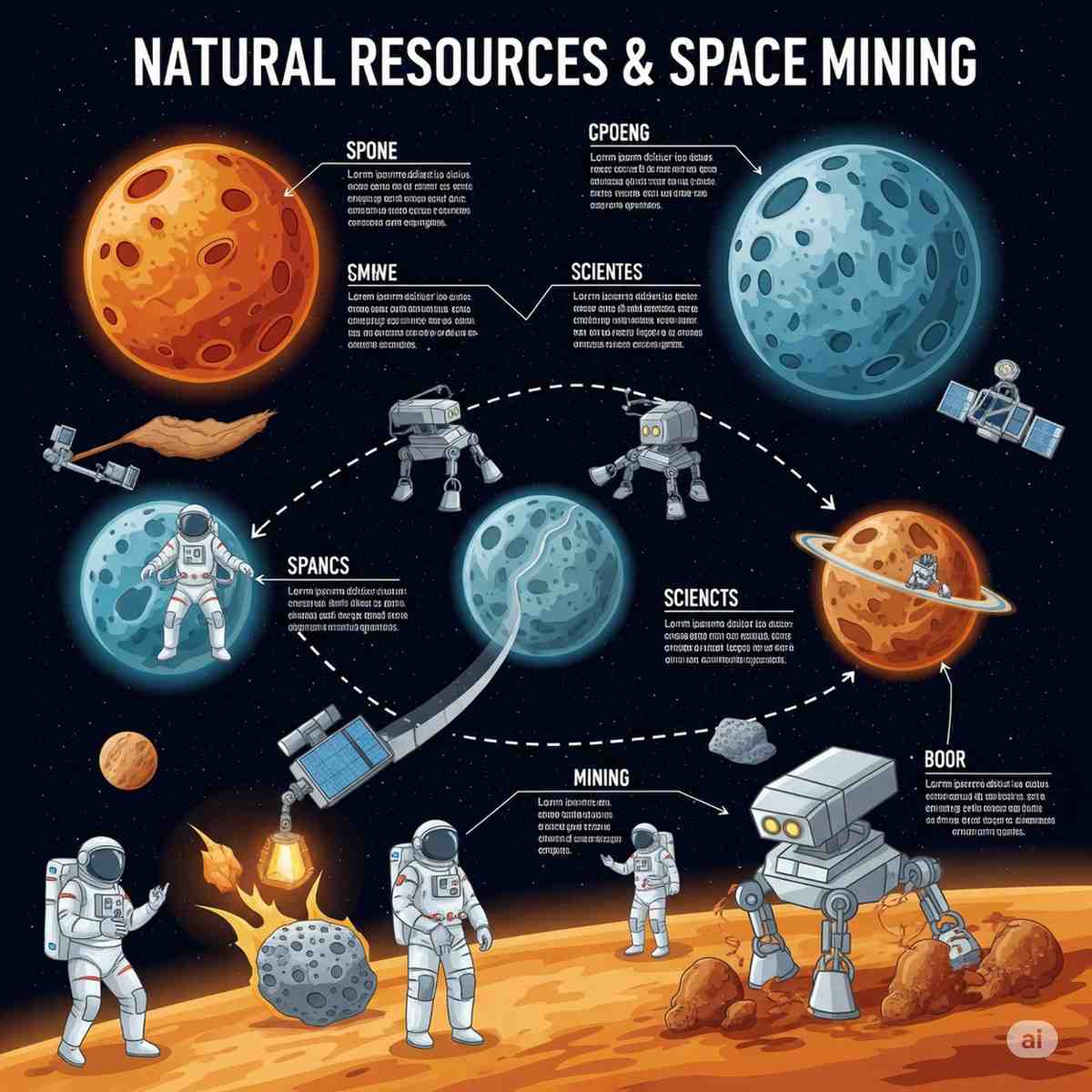
Asteroids also represent a potential treasure trove of natural resources. Many are rich in metals such as iron, nickel, platinum, and even rare earth elements. Some asteroids contain vast quantities of water ice — a resource that could prove invaluable for future space missions, both as a source of drinking water and as a component for making rocket fuel. impact asteroids in space
In an era where space exploration is becoming increasingly commercial, asteroid mining is no longer the realm of science fiction. Private companies like Planetary Resources and Deep Space Industries have proposed ambitious plans to mine near-Earth asteroids for valuable materials. These ventures, if successful, could fuel the next phase of space colonization, reducing our dependence on Earth-based resources and making long-duration missions more sustainable. impact asteroids in space
4. Asteroids as Planetary Defense Targets
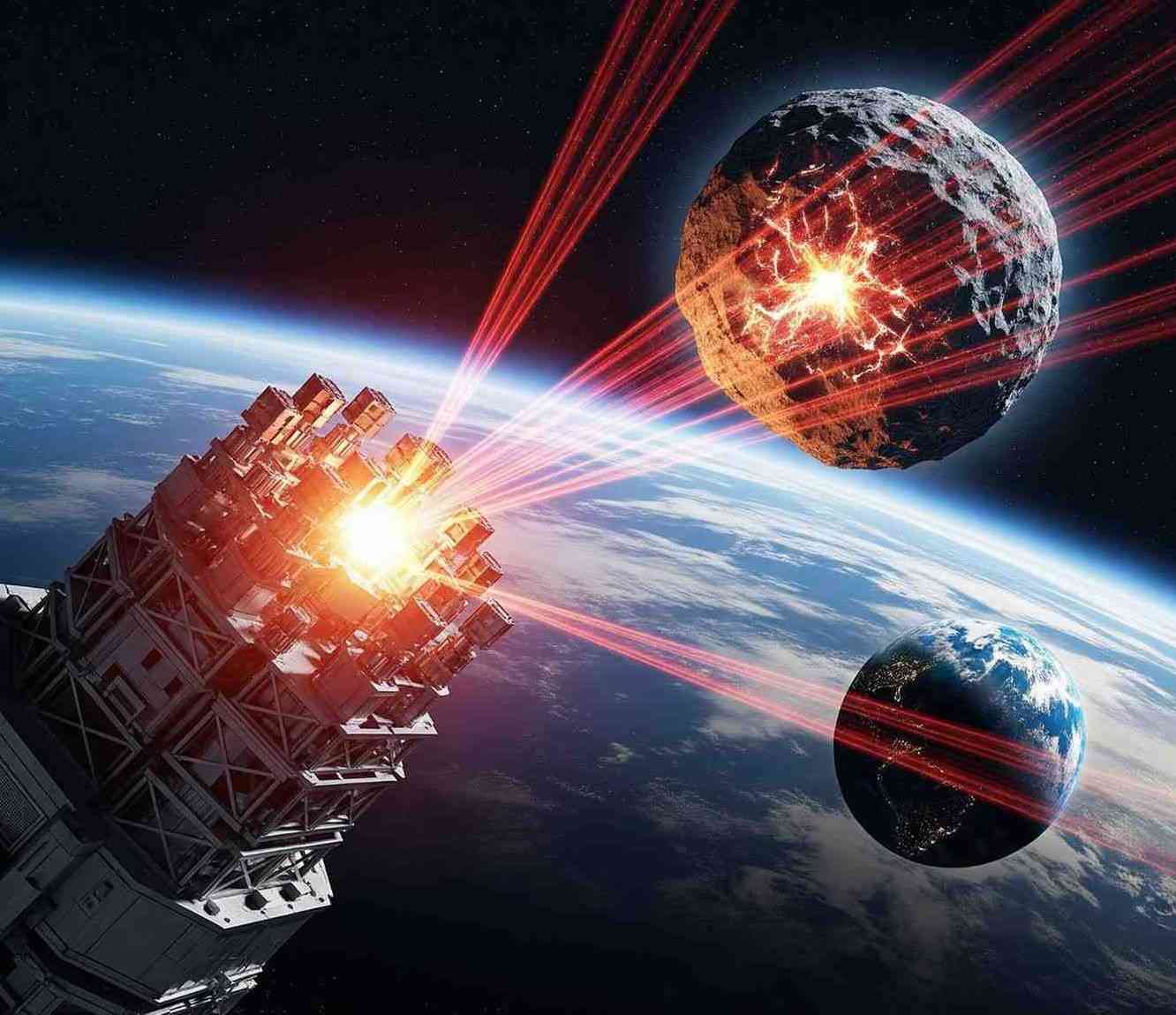
While asteroids hold great promise, they also pose significant threats. The impact of a large asteroid could have catastrophic consequences for life on Earth.That impact unleashed energy equivalent to billions of nuclear bombs, drastically altering Earth’s climate and ecosystems. impact asteroids in space
Understanding asteroids and tracking their movements is thus vital for planetary defense. Space agencies around the world, including NASA, ESA, and others, are developing early warning systems and deflection technologies. One notable example is NASA’s DART (Double Asteroid Redirection Test) mission, which successfully altered the orbit of an asteroid moonlet in 2022 — the first real-world test of our ability to redirect a potentially hazardous asteroid. impact asteroids in space
5. Stepping Stones for Deep Space Exploration

Asteroids may also serve as stepping stones for future deep space missions. Their low gravity makes them easier to land on and take off from compared to larger planetary bodies. As such, they could function as refuelling stations, research outposts, or intermediate habitats for astronauts traveling deeper into space, such as to Mars or beyond.
Some scientists propose that colonizing or building infrastructure on or around asteroids could offer a strategic advantage. For instance, hollowing out large asteroids to create radiation-shielded habitats is a concept that has been explored in science fiction and studied in early space architecture proposals. impact asteroids in space
6. Scientific and Educational Value
Studying asteroids doesn’t just serve practical or economic purposes; it also enriches our understanding of space in a broader sense. The knowledge gained from these celestial objects is shared across scientific disciplines — from astronomy and geology to biology and chemistry. Each asteroid mission inspires a new generation of scientists, engineers, and explorers, keeping the spirit of space discovery alive.
Furthermore, asteroid studies help refine our models of planetary dynamics, orbital mechanics, and solar system evolution. As we learn more about how asteroids behave — how they spin, how they move, and how they respond to external forces — we refine our predictions and gain
- Asteroids and Space Law
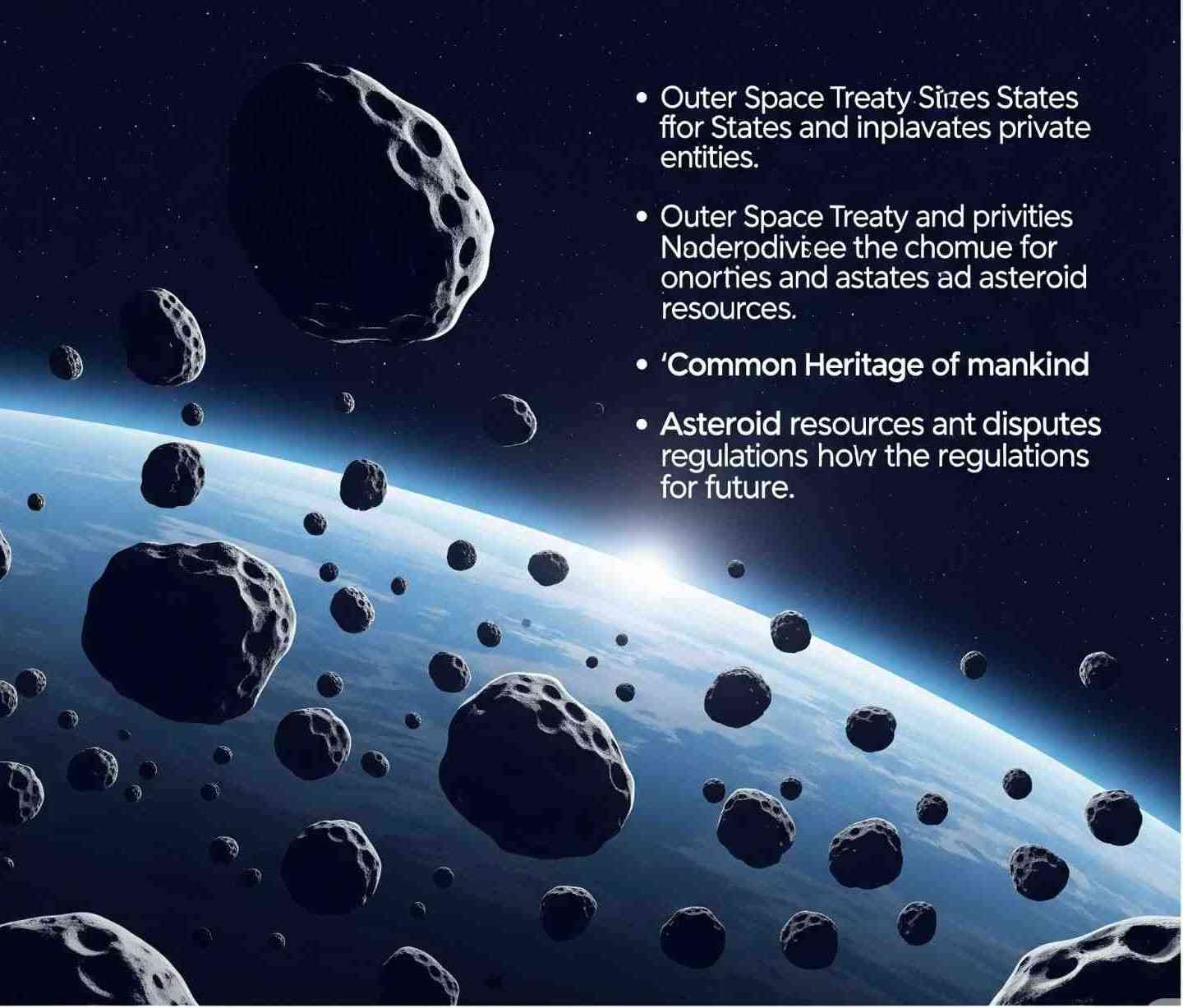
As humans expand their reach into space, legal and ethical questions about ownership, resource rights, and environmental protection are coming to the forefront. Asteroids are central to these debates. Who owns an asteroid? Can a company legally mine it? Should some be protected as celestial heritage sites? These questions are shaping the development of space law, an emerging field critical to the peaceful and equitable use of outer space.
The United Nations Outer Space Treaty (1967) forms the foundation of international space law, but it is increasingly being tested by asteroid-related activities. The importance of asteroids in space governance will only grow as commercial and scientific interests intersect.
Which Asteroid Will Hit Earth in 2025? Unveiling the Truth Behind Space Rocks and Earth’s Safety
Introduction
From science fiction films like Armageddon to real-world headlines about near-Earth objects (NEOs), the idea of a massive space rock colliding with Earth sparks both curiosity and fear. In recent years, this fear has gained new attention, especially with rising questions on social media and conspiracy circles: Which asteroid will hit Earth in 2025?
Let’s explore the science, data, and expert insights behind this pressing question. Is there truly an asteroid on a collision course with our planet in 2025? Or are we misinterpreting the astronomical facts? impact asteroids in space
The Origin of the Rumor
The concern about a possible asteroid impact in 2025 didn’t arise from nowhere. It started with misread or misunderstood data from NASA’s Center for Near Earth Object Studies (CNEOS). Every year, NASA and other space agencies track thousands of asteroids and comets. These objects, known as Near-Earth Objects (NEOs), have orbits that bring them close to our planet.
When people look at databases containing asteroid trajectories, they sometimes notice close-approach events and panic—thinking that “close” means “dangerous.” In reality, “close” in astronomical terms often still means millions of kilometers away. impact asteroids in space
The 2025 Asteroid in Question: 2007 FT3 ]impact asteroids in space
The asteroid most frequently mentioned in relation to 2025 is 2007 FT3, a near-Earth asteroid discovered in March 2007. After its brief observation window, scientists lost track of it due to its highly uncertain orbit. That uncertainty has made it a regular feature on NASA’s Sentry Risk Table—a list of objects with non-zero chances of impacting Earth. impact asteroids in space
Orbital Uncertainty
Because we only observed 2007 FT3 for a few days, its exact trajectory is not well known. NASA assigns it a very low probability of impact, based on one possible orbit path out of millions. This isn’t a prediction that it will hit Earth; it’s a calculated outcome based on incomplete data.
As of the latest projections:
- Date of potential impact: October 5, 2025
- Probability of impact: 1 in 11.5 million
- Estimated energy release: ~2,600 megatons of TNT (if it were to hit)
That sounds alarming—but context is key.
Why You Shouldn’t Panic
1. Extremely Low Odds
To put that in perspective, you’re more likely to win the Powerball lottery twice in your lifetime than to experience this asteroid hitting Earth. These odds are so small that they don’t even register on most risk assessment scales used by governments or scientists. impact asteroids in space
2. NASA Is Watching Closely
Thanks to NASA’s Planetary Defense Coordination Office (PDCO) and international observatories, asteroid tracking has never been more accurate. Advanced space telescopes like NEOWISE, and upcoming missions like NEO Surveyor, ensure that if a genuine threat emerges, we will know years in advance. impact asteroids in space
3. Most Asteroids Burn Up
Even if a small asteroid were to make its way into Earth’s atmosphere, it would likely disintegrate or explode before reaching the surface—just like the Chelyabinsk meteor that exploded over Russia in 2013, injuring 1,500 people but causing no deaths.
How Are Asteroid Threats Assessed?
NASA and other space agencies use the Torino Scale and Palermo Technical Impact Hazard Scale to rank potential asteroid impacts. These tools consider both the likelihood and potential damage of an impact.
As of now, no known asteroid scores higher than Level 1 on the Torino Scale, which represents a normal level of background risk.
Public Fear vs. Scientific Reality
Misinformation often spreads faster than facts. In the age of viral TikToks and YouTube conspiracy videos, headlines like “NASA Predicts Asteroid Impact in 2025” attract attention—even if they’re misleading or false.
Here’s what to remember:
- No asteroid is predicted to hit Earth in 2025.
- 2007 FT3 is not an imminent danger.
- Scientists are constantly updating their data with improved observations.
What If an Asteroid Did Threaten Earth? ]impact asteroids in space
Even in the unlikely case that an asteroid posed a significant threat, humanity is no longer helpless.
Planetary Defense Strategies Include:
- Kinetic Impactors: Like NASA’s successful DART Mission in 2022, which deflected an asteroid by crashing into it.
- Nuclear Detonation: A last-resort method to either nudge or fragment a large incoming object.
These methods show that we are not passive observers—we’re developing the tools to defend our planet.
Looking Ahead: 2029 and Beyond
Interestingly, a much larger asteroid, 99942 Apophis, will make an extremely close approach to Earth in 2029. It will pass just 31,000 km from Earth’s surface—closer than some satellites. But don’t worry: NASA has confirmed there is zero chance of impact in 2029 or the following century. impact asteroids in space
These events are valuable because they help scientists test our planetary defense systems and refine tracking models.
Which Was the Last Asteroid That Hit Earth? ]impact asteroids in space
Introduction
Among these, asteroids are rocky remnants from the early solar system that sometimes cross paths with Earth. While most burn up harmlessly in our atmosphere, some manage to make contact with the surface, often sparking curiosity and concern. So, which was the last asteroid that hit Earth? The answer depends on what we classify as a “hit”—but the most recent widely acknowledged event occurred in 2023, when Asteroid 2023 CX1 entered Earth’s atmosphere and burned up over France. impact asteroids in space
Let’s explore what happened, how scientists track such events, and what this means for Earth’s safety in the cosmic arena.
What Are Asteroids?
Asteroids are small, rocky objects primarily found in the asteroid belt between Mars and Jupiter. Sometimes, gravitational forces or collisions eject them from their stable orbits, causing them to travel near Earth. When one of these objects enters Earth’s atmosphere, it’s termed a meteoroid; if it burns up in the atmosphere, it becomes a meteor (commonly called a shooting star). If it survives the atmospheric entry and lands on Earth, it’s called a meteorite. impact asteroids in space
The Last Known Impact: Asteroid 2023 CX1
On February 13, 2023, a small asteroid designated 2023 CX1 was discovered just a few hours before it entered Earth’s atmosphere. It was around 1 meter (3 feet) wide—too small to cause significant damage, but large enough to create a bright fireball in the sky. impact asteroids in space
Discovery and Impact
2023 CX1 was detected by astronomer Krisztián Sárneczky from Hungary. Using a telescope at the Piszkéstető Station, part of Konkoly Observatory, Sárneczky noticed a fast-moving object headed towards Earth. The object was tracked and confirmed by observatories and space agencies globally, including NASA.
Roughly seven hours after discovery, the asteroid entered Earth’s atmosphere and exploded in a bright flash over Northern France, particularly near Rouen. The atmospheric entry created a visible meteor, and while no meteorites were immediately recovered, the event marked a significant moment in planetary defense history—it was only the seventh time ever that an asteroid had been detected in space before hitting Earth. impact asteroids in space
Previous Notable Asteroid Events
In recent decades, Earth has had a few impactful encounters with space rocks:
1. Chelyabinsk Meteor (2013)
- Location: Chelyabinsk, Russia
- Size: ~20 meters (65 feet)
- Speed: ~19 kilometers per second (42,500 mph)
- Energy Released: ~400–500 kilotons of TNT (30x Hiroshima bomb)
- Injuries: ~1,500 people (mostly from broken glass due to shockwave)
This meteor exploded about 30 km above ground, generating a massive shockwave. It’s the most significant atmospheric entry since the 1908 Tunguska Event.
2. Tunguska Event (1908)
- Location: Siberia, Russia
- Size: ~50–60 meters
- Effect: Flattened ~2,000 square kilometers of forest
- Though it left no impact crater, the explosion was powerful enough to knock people off their feet 60 km away.
These events underscore how even small or medium-sized asteroids can cause localized devastation.
Why Was 2023 CX1 Important?
Though small, 2023 CX1 marked a turning point in planetary defense:
- Successful Early Detection: Scientists identified and tracked the object within hours, showcasing the improvements in early warning systems.
- International Collaboration: Global space agencies and telescopes quickly confirmed the path and shared data in real-time.
- Public Engagement: The event was visible and captured on video, helping the public understand the science and scale of asteroid entries.
It proved that with adequate technology and cooperation, Earth can monitor and predict near-Earth objects (NEOs) with growing accuracy.
How Are Asteroids Tracked?
Agencies like NASA and the European Space Agency (ESA) run specialized programs to detect and monitor NEOs:
1. NASA’s Planetary Defense Coordination Office (PDCO)
- Works to discover, track, and characterize NEOs.
- Maintains the Sentry System, which continuously scans the sky for impact threats.
2. ESA’s NEO Coordination Centre
- Shares asteroid data across European observatories.
- Develops mitigation strategies in case of threats.
These agencies use powerful telescopes and software algorithms to calculate orbits and predict potential collisions.
Could a Larger Asteroid Hit Earth?
The chances of a large asteroid hitting Earth in the near future are low, but not zero.If an object this large were to hit Earth, it could cause regional or even global devastation. impact asteroids in space
Fortunately, scientists have mapped over 90% of large NEOs (over 1 km), and none are currently on a collision course with Earth for at least the next 100 years. impact asteroids in space
However, smaller objects—like 2023 CX1—are harder to detect and could still surprise us. That’s why continued investment in asteroid tracking and planetary defense is critical. impact asteroids in space
What Happens If a Dangerous Asteroid Is Detected?
If a threatening asteroid is discovered, there are several theoretical ways to deflect or mitigate it:
- Example: NASA’s DART Mission successfully redirected asteroid moonlet Dimorphos in 2022.
3. Nuclear Detonation
- As a last resort, a nuclear explosion could either destroy or deflect the object—though this approach carries significant risks and uncertainties.
Public Awareness and Preparedness ]impact asteroids in space
While Earth faces very few real threats from space rocks, public awareness is growing thanks to education and media coverage. Events like 2023 CX1, Chelyabinsk, and NASA’s DART mission highlight both the risks and our growing capabilities to deal with them.
Online tools like NASA’s “Asteroid Watch” allow the public to track upcoming close approaches and learn about near-Earth objects in a transparent, engaging way.
What Happens If an Asteroid Hits the Moon? ]impact asteroids in space
The Moon, Earth’s constant celestial companion, has long fascinated scientists, astronomers, and sky-watchers alike. With its craters and scars visible even through basic telescopes, it’s clear that the Moon has been bombarded by asteroids and other celestial debris for billions of years. But what if a sizable asteroid were to strike the Moon today? Would it pose a threat to Earth? Would it change the Moon’s orbit, or create visible effects in our night sky? Let’s delve deep into the possible consequences, scientific theories, and historic precedents of an asteroid impact on the Moon. impact asteroids in space
The Moon’s History with Asteroids
Before we explore future possibilities, it’s important to understand that asteroid impacts on the Moon are not hypothetical—they are historical facts. The surface of the Moon is covered with impact craters, some small and some massive, dating back billions of years.
Because the Moon has no atmosphere to burn up meteoroids like Earth does, even small space rocks frequently collide with its surface. These impacts create new craters and eject lunar material into space. NASA and other space agencies have even captured real-time flashes of light from recent impacts on the Moon’s surface, confirming that asteroid collisions still happen today—just on a much smaller scale.
The Scale of Impact: Size Matters
The effect of an asteroid hitting the Moon depends almost entirely on the size, speed, and composition of the asteroid:
-
Small Asteroids (less than 10 meters wide)
These impacts occur relatively frequently and only create minor craters. They pose no danger to Earth or the Moon’s structure. -
Medium-Sized Asteroids (10 to 500 meters wide)
These can produce noticeable explosions, large craters, and send up massive clouds of dust and debris into space. They could temporarily affect the Moon’s reflectivity (albedo) and visibility from Earth. -
Large Asteroids (over 1 km wide)
This is where things get serious. An asteroid of this magnitude could carve out a massive new basin, eject millions of tons of lunar material, and possibly destabilize surface structures like lunar bases or orbiters in the future. However, even then, it’s unlikely to knock the Moon out of orbit or cause it to shatter.
Could an Impact Affect the Moon’s Orbit? ]impact asteroids in space
One of the biggest fears when people hear “asteroid hitting the Moon” is whether it could knock the Moon out of orbit or send it crashing into Earth. Fortunately, such catastrophic scenarios are incredibly unlikely. impact asteroids in space
To significantly change its orbit, an asteroid would need to carry an unimaginably large amount of energy. Even a 10-kilometer-wide asteroid, similar to the one believed to have wiped out the dinosaurs, would not carry enough energy to knock the Moon out of its current gravitational dance with Earth. It might cause tiny orbital shifts—measurable only with sensitive instruments—but not enough to endanger Earth. impact asteroids in space
Would Earth Be Affected?
Though the Moon might take the direct hit, Earth wouldn’t be completely isolated from the effects. Here’s how an asteroid impact on the Moon might indirectly affect our planet: impact asteroids in space
1. Visible Flash or Explosion
A large impact would create a massive explosion visible from Earth with a telescope—or possibly even with the naked eye. It might look like a bright flash or even a temporary “flare” on the Moon’s surface. impact asteroids in space
2. Ejecta and Lunar Debris
Some of the material thrown up by the impact (called ejecta) could escape the Moon’s gravity and make its way toward Earth. This material could enter Earth’s atmosphere as meteors or even meteorites, depending on size and trajectory. In most cases, this would be harmless, but it could make for an interesting meteor shower. impact asteroids in space
3. Potential for Artificial Structures
As humanity plans for lunar bases—such as NASA’s Artemis program or China’s Moon missions—a powerful asteroid strike could destroy equipment, habitats, or satellites orbiting the Moon. Any astronauts or robotic systems on the Moon during such an impact would be at risk.
Could the Moon Break Apart?
This is a popular theme in science fiction: a massive asteroid collides with the Moon, shattering it into fragments and raining destruction upon Earth. While visually dramatic, this is far from realistic. Even large-scale impacts would not have enough force to completely break the Moon apart. In fact, the Moon has withstood multiple high-energy impacts over billions of years and remains intact.
A Lunar Ring System?
One theoretical outcome of a massive impact is the creation of a temporary lunar ring system. If enough debris were ejected from the Moon’s surface and remained in lunar orbit, it could form rings—much like Saturn’s, but smaller and temporary. However, this would require very specific conditions, including the correct velocity and angle of ejection. impact asteroids in space
Monitoring for Threats
NASA, ESA, and other space organizations constantly monitor Near-Earth Objects (NEOs) that could pose a risk to Earth or the Moon. Programs like NASA’s Planetary Defense Coordination Office (PDCO) track thousands of asteroids, analyzing their trajectories years into the future. While asteroid impacts on the Moon are expected to continue, none of the known near-Earth asteroids are currently on a collision course with our natural satellite. impact asteroids in space
